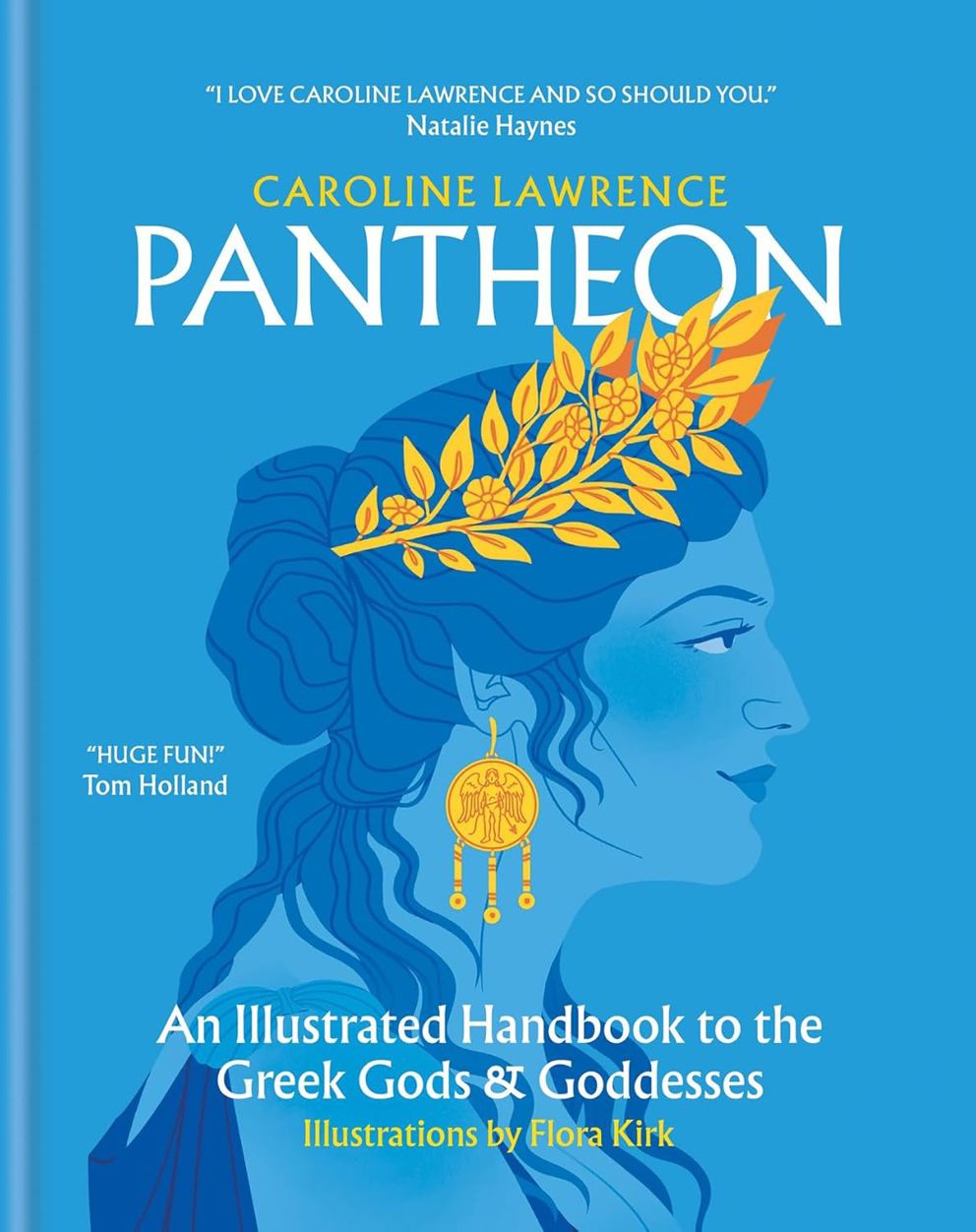
Aimed at adults and younger readers of 12+, Pantheon offers an essential and accessible reference guide to the Greek gods and goddesses and other major figures of Graeco-Roman myth. Caroline Lawrence is best-known as author of much-loved children’s book series The Roman Mysteries and has also written retellings of stories from Virgil’s Aeneid and Aesop’s Fables. However, she is very clear that Pantheon is pitched at a more adult audience. In her Foreword, Caroline Lawrence sets out her mission:
‘Recently I listened to a podcast by two reviewers who went to see the Broadway musical Hadestown without knowing anything about it. They were surprised that most people in the audience seemed completely familiar with the world and the characters. The reviewers themselves knew nothing about the Greek gods and goddesses or the underlying stories. They confused Hades, god of the Greek underworld, with the Christian Devil.
‘This guide is for those reviewers and also for anybody else who wants a primer for the Olympian gods.’
It is true that to understand western culture, it is almost impossible to avoid Classical references, and this is certainly not limited only to marble statues in National Trust houses. Very recent blockbusters such as Kaos on Netflix will leave viewers curious about the mythical world it presents. Certainly, not everybody will have picked up this knowledge at school, particularly if they attended a school which did not offer any of the Classics subjects. Googling the names of individual characters from myth may take an enquirer down rabbit holes without giving an overview of where the character sits within the mesh of myth. Indeed, as Classics teachers know, there are multiple versions of each story and the interconnections between stories are manifold. Thus, Caroline Lawrence’s great achievement here is to give the newcomer a carefully-edited fact-file from which to start. For instance, for Zeus, headings include: Origin Story, Job description, Significant Others, God of, Appearance, Epithets, Animal and Plant Associations, Where to Find Him, & One of His Best-Known Myths.
Pantheon is also rich in including key descriptions from ancient poetry and drama. The different elements of text are beautifully laid out so one can pick through, reading key quotes, or find out more by delving into the shaded information boxes on, for instance, EPITHETS, or GREEK VASES. Beautiful illustrations by Flora Kirk help us to visualise the different mythical characters, making them easier to remember. The book also has a full index, making it easy to use.
Caroline Lawrence’s approach is not story-based, although it does outline the best-known stories of the different gods, goddesses, heroes, heroines and monsters. This is probably because bookshops are currently awash with retellings of the myths – instead, Pantheon offers the reference guide which will help make sense of all these retellings.
As mentioned earlier, the book starts with Zeus and continues to the other Olympians – a straightforward approach. However, its scope extends much further, including sections on Primal Deities, Power Couples, Miscellaneous Deities (including Isis and Mithras), Heroes and Anti-heroes, Heroines, Monsters and Hybrids. Each section is informative, written with Caroline Lawrence’s usual clarity and lightness of touch.
One caveat to be aware of is that on Caroline Lawrence’s website, she says clearly of Pantheon ‘PG! Parental guidance recommended. Suitable for children aged 12+ because of bad behaviour by some of the gods, heroes and monsters.’ Interestingly, the publisher appears not to have included this information on the book cover, as far as I can see. Due to the beautiful coloured illustrations, one might be tempted to buy this book for a younger child, but the subject matter is dealt with in a manner aimed clearly at adults and secondary pupils.
As a secondary school teacher, it’s been hard to find a reference book which sits in the space between Rick Riordan (for younger readers) and Robert Graves’ Greek Myths (written 70 years ago), but Pantheon, clear, authoritative and easy to navigate, will be my go-to sourcebook now.


